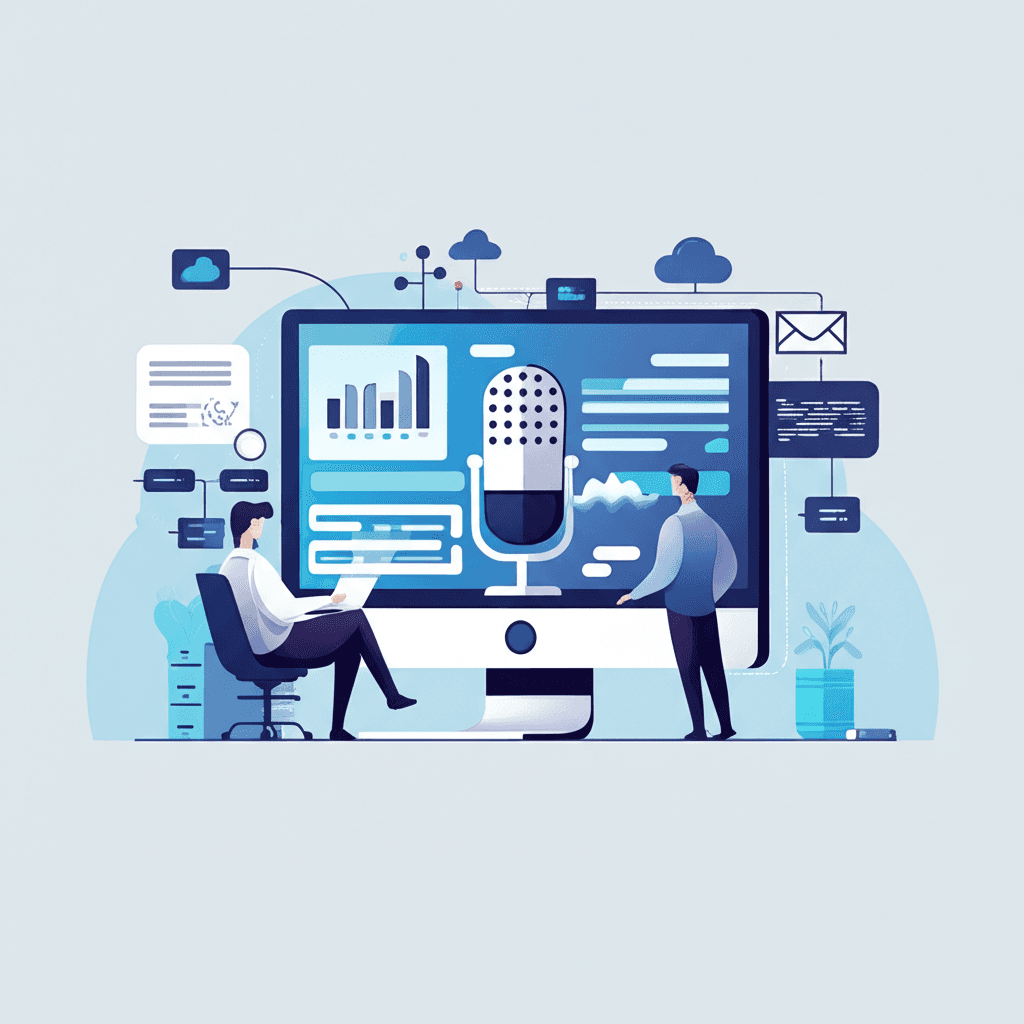OpenAI Transforms ChatGPT into Work Hub with Audio Recording Power
The new "Record" feature transforms ChatGPT into an indispensable professional assistant, seamlessly capturing meetings and integrating cloud data.
June 19, 2025

OpenAI has significantly expanded the capabilities of its flagship product, ChatGPT, by introducing "ChatGPT Record," a powerful new feature integrated into its macOS desktop application. This development allows paying subscribers across Pro, Team, Enterprise, and Edu plans to record, transcribe, and summarize audio directly within the app, marking a strategic push deeper into professional and educational workflows.[1][2] The new functionality aims to transform how users capture and process information from meetings, brainstorms, and voice notes by converting spoken words into structured, actionable text in real time.[3][4] This move positions ChatGPT not just as a conversational AI but as a comprehensive productivity and work interface, directly competing with established transcription services and meeting assistant tools.[3][5]
The "Record" mode is designed for ease of use, enabling users to initiate recording with a simple click.[4] As a user speaks, the application performs live transcription.[4] Upon completion of a recording, which can be up to 120 minutes per session, ChatGPT automatically processes the audio, generating a structured summary within a private, editable document called a Canvas.[1][4] These canvases organize the information with key points, time-stamped citations, and suggested action items, which can then be transformed into various formats like project plans, emails, or even code.[3][4] Initially, the feature is rolling out to Team users on macOS, with Pro, Enterprise, and Edu users gaining access shortly thereafter.[6][7] OpenAI has stated that audio files are deleted immediately after transcription to address privacy concerns, and for Team, Enterprise, and Edu workspaces, the resulting transcripts and canvases are not used for model training by default.[4]
This enhancement is part of a broader strategy by OpenAI to embed ChatGPT more deeply into the daily operations of its growing business user base, which has expanded from two million to three million paying customers in a matter of months.[6][8][7] The audio recording feature was launched alongside "Cloud Connectors," which allow ChatGPT to link to and analyze data from third-party services like Google Drive, Microsoft OneDrive, and Dropbox.[1][5] This integration means users can now create more contextually relevant content by having ChatGPT reference internal documents, emails, and notes alongside its vast knowledge base.[3] For example, a user could record a meeting, have it transcribed and summarized, and then ask ChatGPT to draft a follow-up email that references specific points from the discussion as well as data from a connected Google Sheet.[1][3] The platform can also reference past recordings' transcripts and canvases to provide more informed responses in new conversations.[4]
The introduction of native, real-time transcription and summarization places ChatGPT in direct competition with a host of specialized AI-powered tools like Otter.ai and Notta, as well as features within platforms like Zoom and Microsoft Teams.[9][5][10] While the convenience of having these capabilities integrated directly into the familiar ChatGPT interface is a significant advantage, early analysis suggests some limitations.[11] Currently, the feature is exclusive to the macOS desktop app and, critically, lacks speaker identification, which can make it difficult to decipher who said what in a multi-person meeting.[11][9] Furthermore, it does not integrate with calendar applications to automatically join and record scheduled meetings, requiring users to manually initiate the recording process.[11] The accuracy is also noted to be best in English, with performance in other languages still improving.[4] Despite these initial drawbacks, the underlying technology, likely an evolution of OpenAI's powerful Whisper ASR (Automatic Speech Recognition) model, is expected to improve rapidly.[12][13] The long-term implications for the standalone transcription service market could be profound, as the automation of these tasks becomes a standard feature in broader AI platforms rather than a niche service.[12][14]
In conclusion, the launch of ChatGPT Record signifies a major evolution for the AI platform, shifting it from a powerful but discrete tool to an integrated work hub. By combining real-time audio processing with the ability to connect to and reason over a user's personal and professional data, OpenAI is aiming to become an indispensable assistant for a wide range of knowledge workers.[3][8] While the initial offering has some limitations compared to more mature, specialized products, the rapid pace of development at OpenAI suggests these gaps will likely close over time.[9] This move intensifies the competition among AI giants like Google and Microsoft to create the most comprehensive and seamless AI-powered work interface, ultimately pushing the boundaries of what AI can do to enhance productivity and streamline information management in the modern workplace.[3]
Sources
[2]
[3]
[4]
[7]
[8]
[9]
[10]
[11]
[12]
[13]
[14]